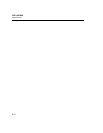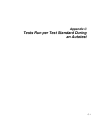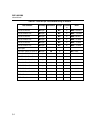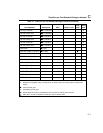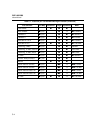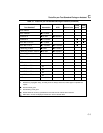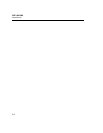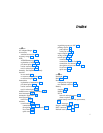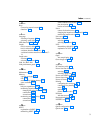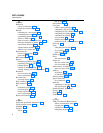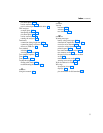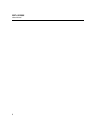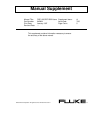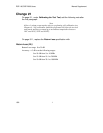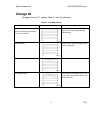
DSP-100/2000
Users Manual
2
—C—
Cable
basic troubleshooting, 7-21
configuring a custom cable, 6-4
construction, coaxial and twisted pair, 7-1
identifying hub port connections, 4-20
interface for PC, 8-13
interface for printing, 5-2
pin connections for 568 standard, 7-3
Cable temperature
effect on test results, 2-25
selecting, 2-24
selecting, quick start, 2-4
Cable type
selecting, 2-24
selecting, quick start, 2-4
Calibrating the test tool, 6-1
Certifications, 8-16
Channel
configuration diagram, 2-8
test standard selection, 2-24
Characteristic impedance. See Impedance
Communicating with a PC, A-2
downloading software updates, A-10
downloading test standards, A-9
problems with communications, A-4
Conduit setting
effect on test results, 2-25
selecting, 2-25
selecting, quick start, 2-4
Configure custom cable, 6-4
Connectors
main unit, 2-13
remote, 2-15
RJ11 (telephone), 2-2
Crossed pair
wire map display, 3-7
Crossed wires
wire map display, 3-7
Custom cable configuration, 6-4
—D—
Date, 2-27
Delay skew test, 3-9
Display
adjusting contrast, 2-23
size, 8-17
DSP-LINK
hardware requirements, A-1
installing, A-2
summary of functions, A-5
—E—
Email address for Fluke, A-8
—F—
False test results, 8-5
Fault anomaly threshold (twisted pair), 3-9
Fault info key, 3-4
Fiber optic cable testing, 2-4
Frequency, 155 MHz, 2-24
Front panel
main unit, 2-13
remote, 2-14
—H—
Headroom, 3-4
Hub port capabilities, 4-23
Hub port locator, 4-20
—I—
Impedance
anomaly on coaxial cable, 3-22
anomaly on twisted pair, 3-12
explanation of characteristic impedance, 7-
7
minimizing impedance discontinuities, 7-8
test for coaxial cable, 3-21
test for twisted pair, 3-9
warning result, 3-9
Impulse noise threshold, 4-20
Inductive pickup device, 4-24
Installing DSP-LINK, A-2
Internal fault detected (error message), 8-5
ISDN lines, 2-2



